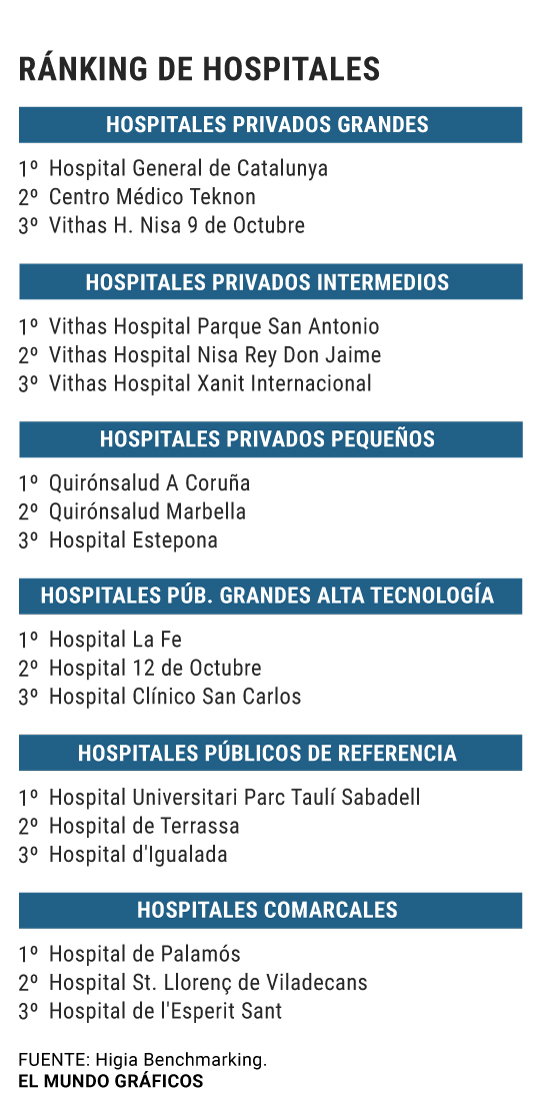The University and Polytechnic Hospital La Fe, in Valencia, and the General Hospital of Catalonia, in Barcelona, have won the first BSH awards this morning for high-complexity health centers - the largest hospitals that care for the most complex diseases. and large private, respectively, in the Global Results category.
The BSH awards (acronym in English for best Spanish hospitals ), organized by Higia Benchmarking, ASHO and Sedisa, seek to recognize the good management of health centers of all sizes in an objective way, differentiating between public and private, large, medium and little ones.
Thus, "up to 250 efficiency and quality indicators adjusted in ten categories have been analyzed," explains Toni Hidalgo, CEO of Higia and director of the awards. That has meant studying around a million data.
Among the nine categories analyzed, from which the overall results are obtained, are included, for example, assistance processes of circulatory, respiratory, nervous system and women's diseases.
Transparency
With a robust and objective methodology, the main one but of this first edition of the awards is low participation, something that does not speak very much in favor of the transparency of Spanish hospitals: only 80 centers in ten different autonomous communities - only 10% of the total, between public and private- have submitted to the call; 6 of them have been discarded because of the poor quality of the data provided, "something that can also be identified as an area of improvement," says Hidalgo.
In fact, this is what these recognitions are about, "comparing yourself to similar hospitals and knowing how to improve, because being very good in a category does not guarantee that all indicators are excellent."
Results
And this comparison shows some quite striking results. For example, in public hospitals of high complexity, the 3 hospitals that lead the ranking in the diagnostic category of Circulatory System have, as a whole, better adjusted results in these processes compared to the overall of their group of hospitals, as statistically significant favorable differences in mortality, 4% lower; readmissions, 12% less, and surgery without admission (CMA), 10% higher than the adjusted mean.
More striking are the differences between smaller public hospitals, which have an 8% lower mortality and 41% less readmissions.
Something similar happens with private ones: for example, the largest have statistically significant differences in readmissions (18% less) and complications (14% less).
All these differences can be seen in a group of hospitals that have voluntarily presented themselves for an awards ceremony thinking they were likely to win. What would happen if your results were compared with those of other centers?
According to the criteria of The Trust Project
Know more- Science and Health
Evolution A worm 550 million years ago sheds light on the first beings that could move
Nutrition A young man goes blind after basing his diet for years on french fries, white bread, ham and sausages
Health The demand for analytics to know immunity to measles is growing

